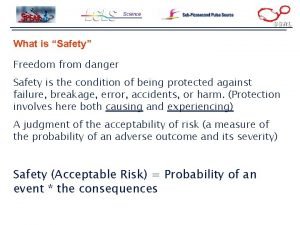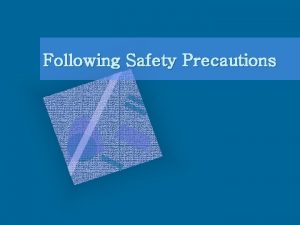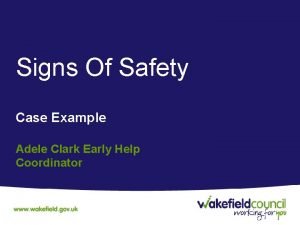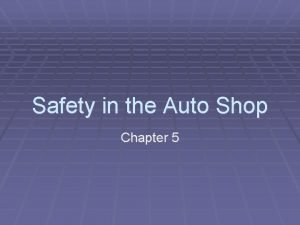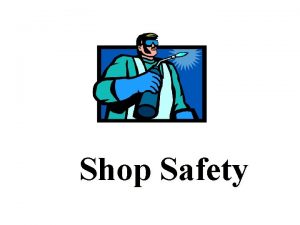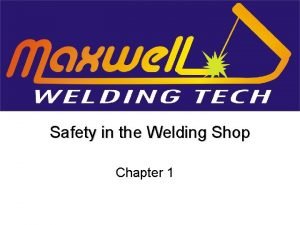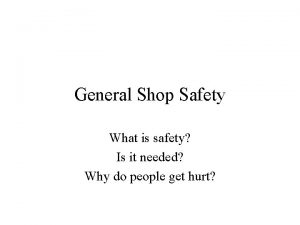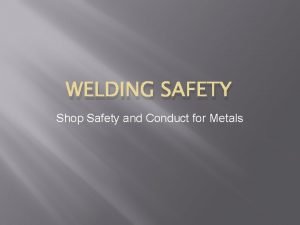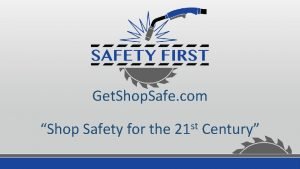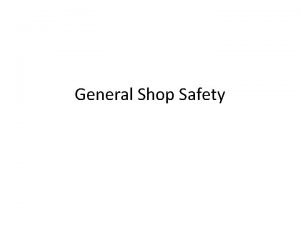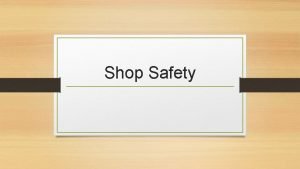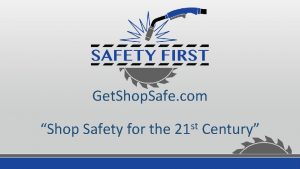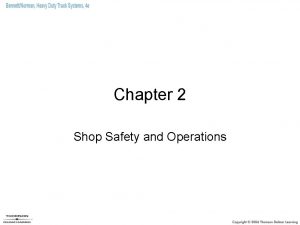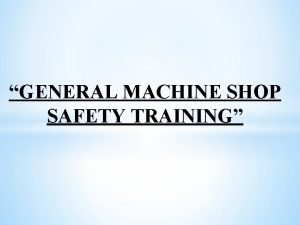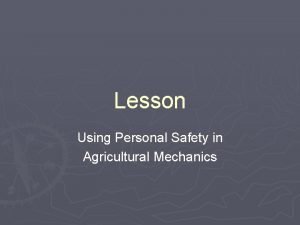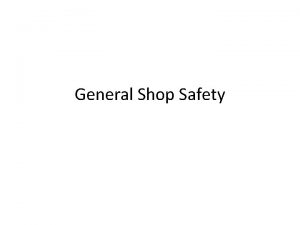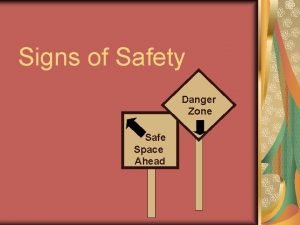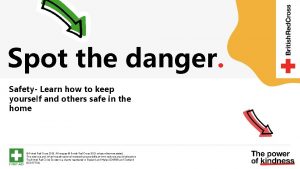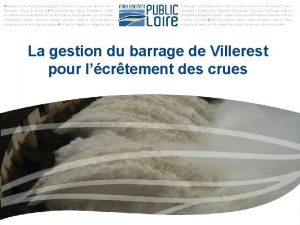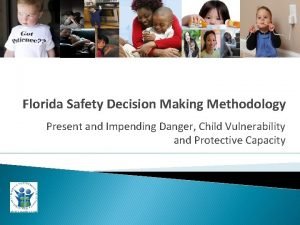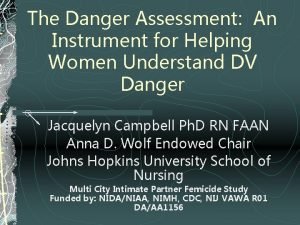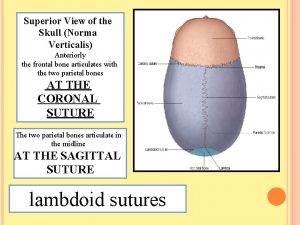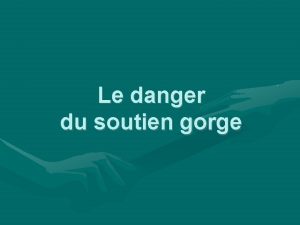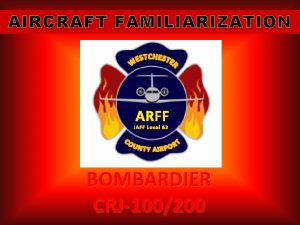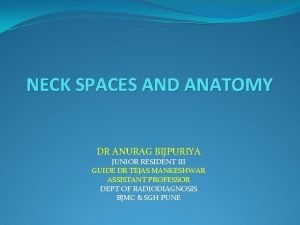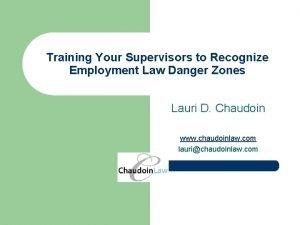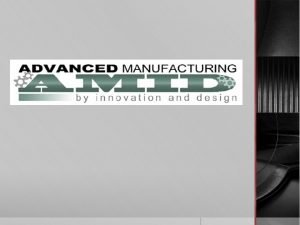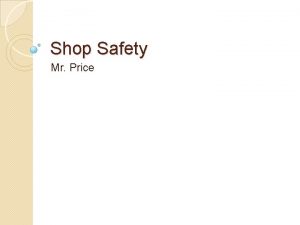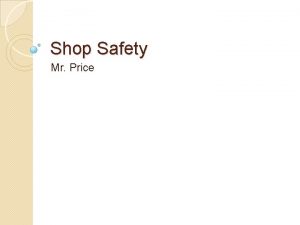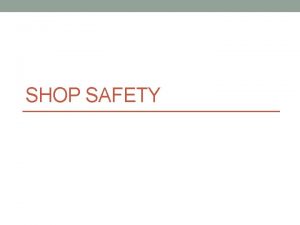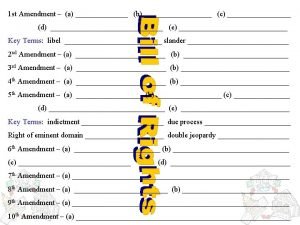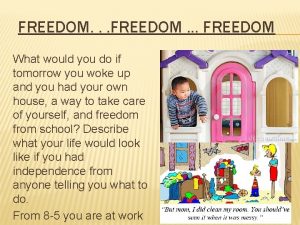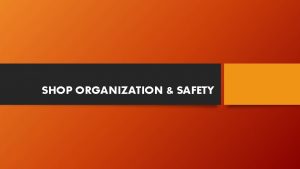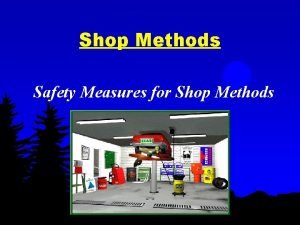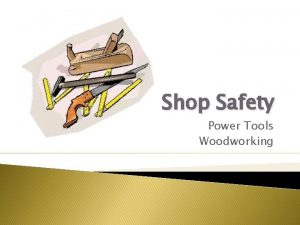Shop Safety What is Safety Freedom from danger













































- Slides: 45

Shop Safety

What is Safety? • Freedom from danger, risks or accidents that may result in injury, death or permanent damage

Safety in the Work Place • Tasks in the shop involve the use of various tools and machinery. Each tools and machinery poses different hazards; so special precautions need to be taken to avoid accidents.

Understanding Safety




How can we keep ourselves safe? • Personal safety is the most important aspect in shop safety. Several different safety devices are available to provide safety. They will only work when properly used. • • • Eye Protection Hearing Protection Protective Clothing

P E R S O N A L S A F T E Y

PERSONAL SAFETY • Safety Glasses: Glasses Offers minimum protection to the face. However, they are first line of defense for the eyes. • For welding you will be using chipping goggles and a welding helmet Safety Glasses must be worn at all times in the shop!!!!!!

HEARING PROTECTION • Many tools and machinery create loud noises. • Ear muffs or plugs should be used to protect your hearing. • Cal- OSHA has established that the maximum noise level is 90 (d. B) for eight hours

HEARING PROTECTION Duration Per Day in Hours ü 8 ü 6 ü 3 ü 2 ü 1 ½ ü 1 ü½ ü ¼ or less None Sound Level in d. B 90 95 97 100 102 105 110 115 Over 115

PROTECTIVE CLOTHING • The amount and type of clothing varies depending on the work being done. • Clothing should fit properly with no frays or ragged areas. • Clothing should be clean and free from oils or grease. • Clothing: Clothing aprons, shop-coats, coveralls, etc. No shorts, skirts, dresses or ragged clothing are allowed

PROTECTIVE CLOTHING • Footwear leather shoes are recommended; closed toed shoes with backs are the least requirement. • Do not wear loose clothing, shirt tails, and unbuttoned sleeves around power equipment. • Do not wear clothes that you do not want to get dirty. Absolutely, NO open toed shoes, flip flops, or high heels will be worn in the shop

PROTECTIVE CLOTHING • Gloves: Gloves provide protection to the hands from heat and cold. • Hard Hats: are needed when objects are being moved overhead or flying objects can be encountered. • Masks and Respirators: Respirators Should be worn to filter out dust, fumes and particles from the air.

Safety Comes First!! • Always wear safety glasses. • When working with heated objects, always wear gloves. • No running or horseplay. • Learn to do a job the right way. • Report all injuries to the instructor. • Observe all warning signs or tags. • Turn off machines when not in use or during repair.

Safety Comes First!! • Unless you have been taught to run a machine, don’t use it. • Always use the proper tool for the job. • Avoid wearing loose or overly baggy clothing when working with machinery. • Be aware of people around you at all times. • Know where fire escapes and fire extinguishers are.

How can we prevent ACCIDENTS?

SAFETY COLORS Red Orange Yellow Blue Green Black and Yellow Stripes Gray Black and White Stripes These colors are used to alert people of certain objects and danger or hazards.

SAFETY COLORS • Red: Red Danger (Red is used to identify areas or items of danger or emergency such as safety switches and fire equipment). • Orange: Warning (Orange is used to designate machines hazards such as edges and openings).

SAFETY COLORS • Yellow: Yellow Caution (Yellow is used to identify parts of machines, such as wheels, levers and knobs that adjust the machine. • Blue: Blue Information (Blue is used as signs of warning or caution): Out Of Order • Green: Green Safety (Safety equipment, safety areas, first aid and medical practice).

SAFETY COLORS • Black and Yellow Stripes: Designated for Radiations Hazards • White: White Traffic Areas-Arrows show direction of traffic • White and Black Stripes: Traffic markings, Barricades • Gray: Gray Floors- Floors of the work area

FIRE TRIANGLE

FIRE PREVENTION • Basic Steps in Fire Prevention: Prevention üStore fuels in approved containers üStore fuels away from other materials that burn easily üUse fire only in safe surrounding üRemove one of the fire triangle elements

CLASSES OF FIRES • Class A: Wood, paper, cloth, trash, plastics: Solid combustible materials that are not metals. • Class B: Flammable liquids: gasoline, oil, grease Any non-metal in a liquid state, on fire. • Class C: Flammable Gasses: butane, acetylene, hydrogen, b natural gas and methane • Class D: D Combustible Metals: Metals that burn. Only class D will put out metal fires.

Emergencies Or Accidents 1) Notify the Teacher 2) Keep Everyone Calm 3) Set Off the Fire Alarm 4) Call the Fire Department 5) Clear the Area 6) Use Fire Extinguishers if instructed to.

Housekeeping • Cleaning work areas • Sweeping—prevent slips and falls • Keeping designated walking areas clear of debris • Restoring equipment and tools after job is completed

General Management • Safety programs—training, meetings, etc. • MSDS sheets • Emergency phone numbers

Behavior • Most accidents are caused by carelessness • Caused by human error • Refrain from getting involved in poor shop behavior: scuffling playing with tools tripping running pushing hurrying projects disobeying shop rules loud talking

Shop Safety Rules v. Keep all hand tools sharp, clean and in safe working order. v. Report any defective tools, machines or other equipment to the instructor. v. Operate a hazardous machine only after receiving proper safety instruction.

Shop Safety Rules • Report all accidents to the instructor regardless of the nature or severity. n Turn off the power before leaving a machine tool. n Disconnect power from machine tools before performing maintenance or making adjustments.

Shop Safety Rules • Use solvents and cleaning materials only after learning about their properties and correct method of use. n Use correctly, properly fitted hand tools.

Shop Safety Rules • Use tools only for the use intended n Keep the shop floor clean of scraps and litter. n Store oily rags in an approved safety container.

Shop Safety Rules • Clean up spilled liquids IMMEDIATELY! n Keep tools picked up and stored properly when not in use. n Only the operator should start the machine.

Shop Safety Rules • Do not stand in line of a revolving tool or flywheel. n Keep you mind on the job when using power tools; avoid conversation with other students. n Know the location of fire extinguishers and how to operate them.

Shop Safety Rules • Do not use defective electrical equipment, extension cords, plugs etc. .

A Clean and Orderly Shop • Keep machinery and equipment arranged to permit safe and efficient work practices and ease of cleaning. n Keep projects arranged orderly to permit clean walkways and eliminate safety hazards.

Clean and Orderly Shop • Keep materials and supplies safely stacked or stored in proper places. n Keep work benches and working areas free of debris and other hazards.

Clean and Orderly Shop • Keep the floor clean and free from obstructions and slippery substances. n Keep aisles, traffic areas and exits free from materials and other debris.

Clean and Orderly Shop • Properly dispose of combustible materials or store in approved safety containers. n Oily rags should be stored in self-closing containers.

Clean and Orderly Shop • Students should receive instruction in and understand the proper procedures to follow in keeping the shop clean and orderly. n Sufficient brooms, brushes and other housekeeping equipment should be readily available.

Welding Fumes • Welding fumes can be harmful to the welder causing implications such as: – Irritation of the respiratory tract – Metal fume fever – A condition known as siderosis – Slightly increase the risk of lung cancer • For these reasons, one should take precaution with welding fumes

Welding Fumes • Welding should be done in a well ventilated area • Should attempt to control fumes at the source – Common ways • Extracted benches • Local exhaust ventilation

Common Ventilation Practices Extracted bench method Local exhaust ventilation

Examples of Welding Practices POOR GOOD
 Freedom from danger, risk, etc.; safety
Freedom from danger, risk, etc.; safety Freedom from danger risk or injury
Freedom from danger risk or injury Positive freedom negative freedom
Positive freedom negative freedom Glorious freedom wonderful freedom
Glorious freedom wonderful freedom Layout flow shop
Layout flow shop Danger statement examples
Danger statement examples Steve van de velde
Steve van de velde Chapter 5 auto shop safety answer key
Chapter 5 auto shop safety answer key Free from danger
Free from danger Welding shop safety
Welding shop safety General shop safety
General shop safety Shop safety colors
Shop safety colors Welding shop safety
Welding shop safety Getshopsafe
Getshopsafe General ventilation
General ventilation General shop safety
General shop safety Machine shop safety checklist
Machine shop safety checklist Get shop safety
Get shop safety Chapter 2 safety practices
Chapter 2 safety practices Pinch point safety definition
Pinch point safety definition Shop safety color coding system
Shop safety color coding system General shop safety
General shop safety Acthyderm
Acthyderm Albeda danger
Albeda danger Warning and danger signs of conflict
Warning and danger signs of conflict Danger space of neck
Danger space of neck Danger zone vital signs
Danger zone vital signs Spot the danger
Spot the danger Safety valve hematoma of scalp
Safety valve hematoma of scalp Barrage des 3 gorges danger
Barrage des 3 gorges danger Site:slidetodoc.com
Site:slidetodoc.com Vv. oesophageales
Vv. oesophageales Impending danger threats
Impending danger threats Consonant vowel consonant adjectives
Consonant vowel consonant adjectives Ms risk factors
Ms risk factors Norma superior
Norma superior Cours technologie charcuterie
Cours technologie charcuterie George orwell's real name
George orwell's real name Drainage lymphatique danger
Drainage lymphatique danger Dangerouscomparative
Dangerouscomparative Jet blast danger area
Jet blast danger area Les danger d'internet
Les danger d'internet Infrahyoid
Infrahyoid General danger signs
General danger signs Varan malais danger homme
Varan malais danger homme Danger zones for supervisors
Danger zones for supervisors
